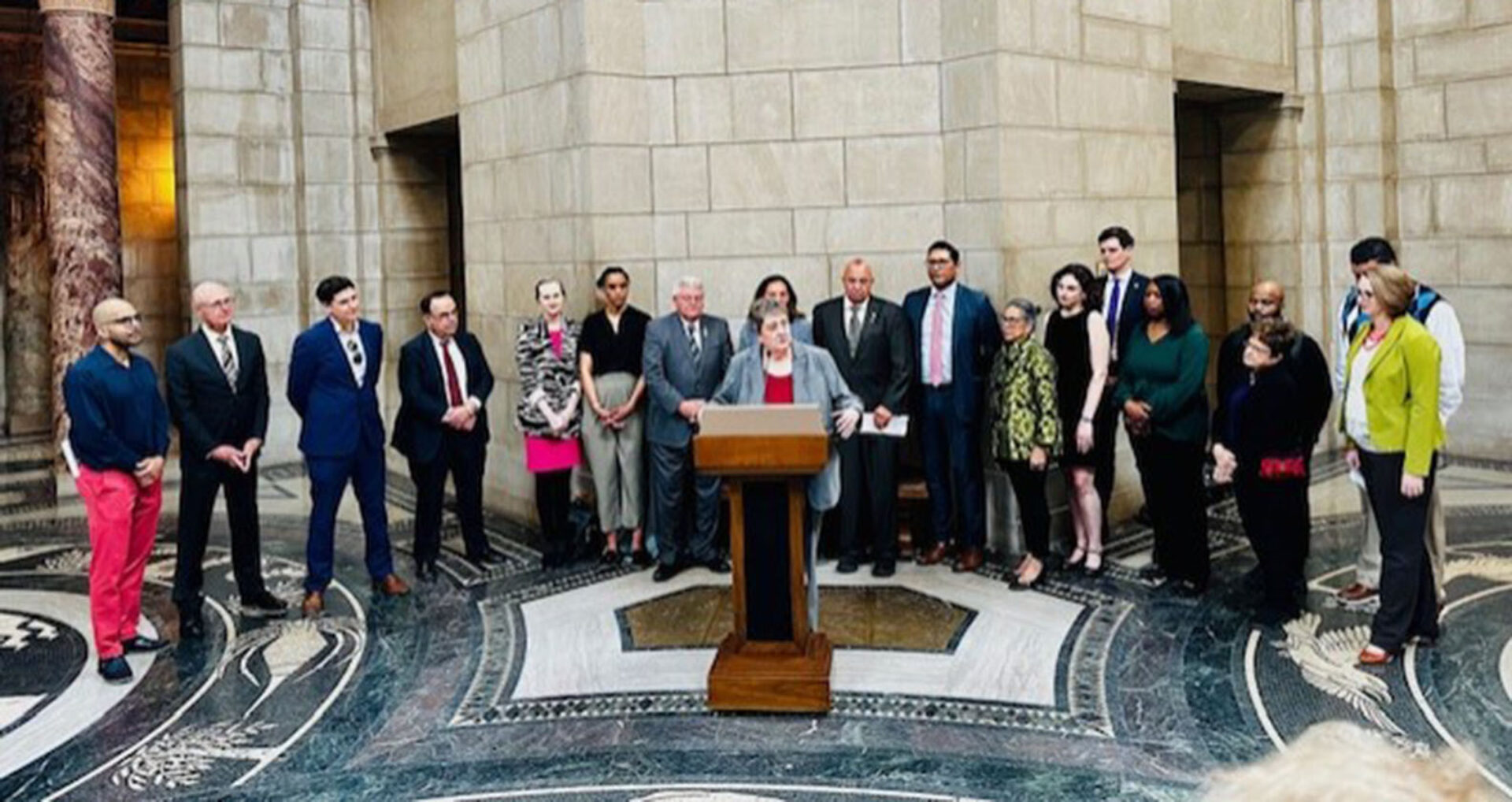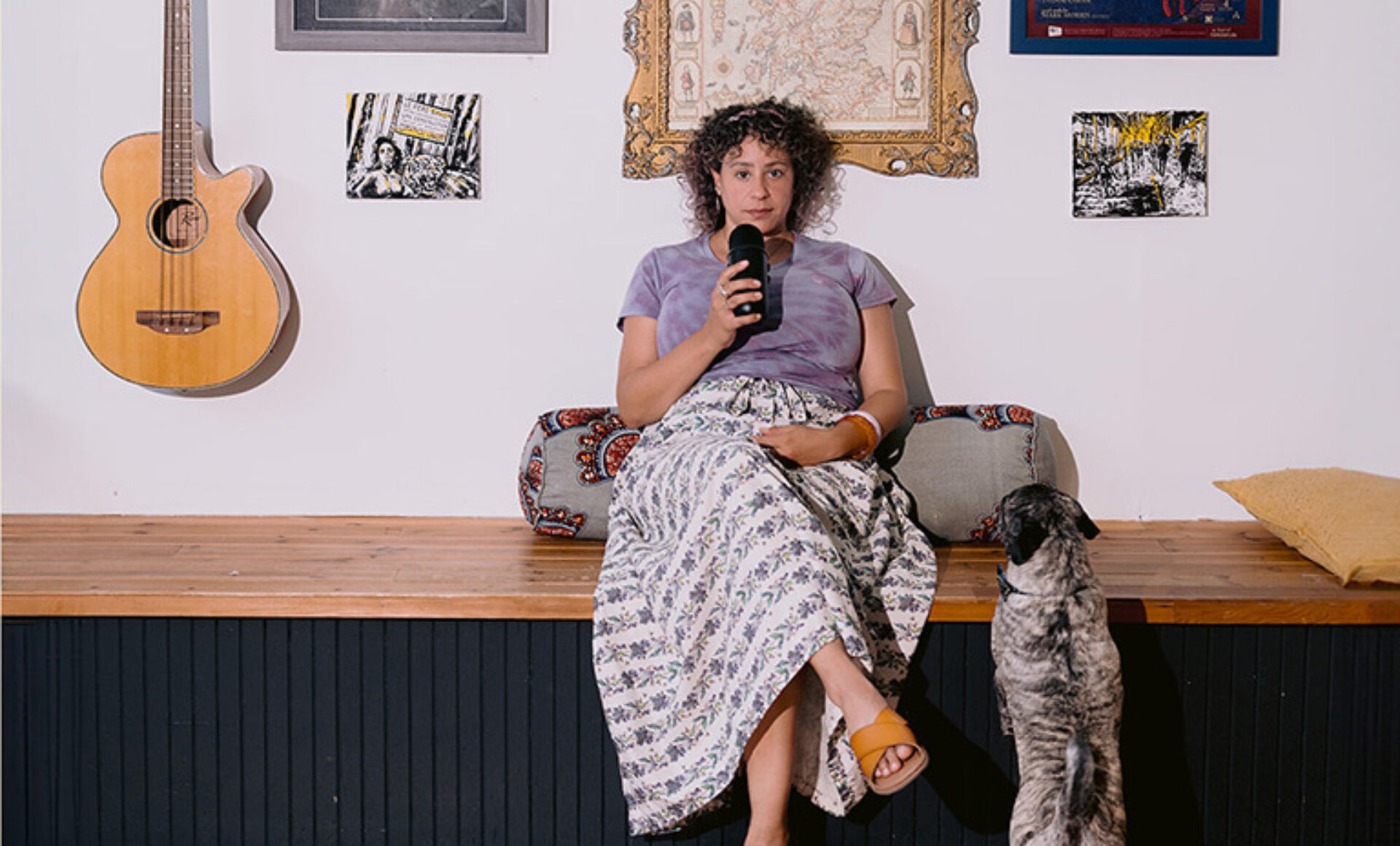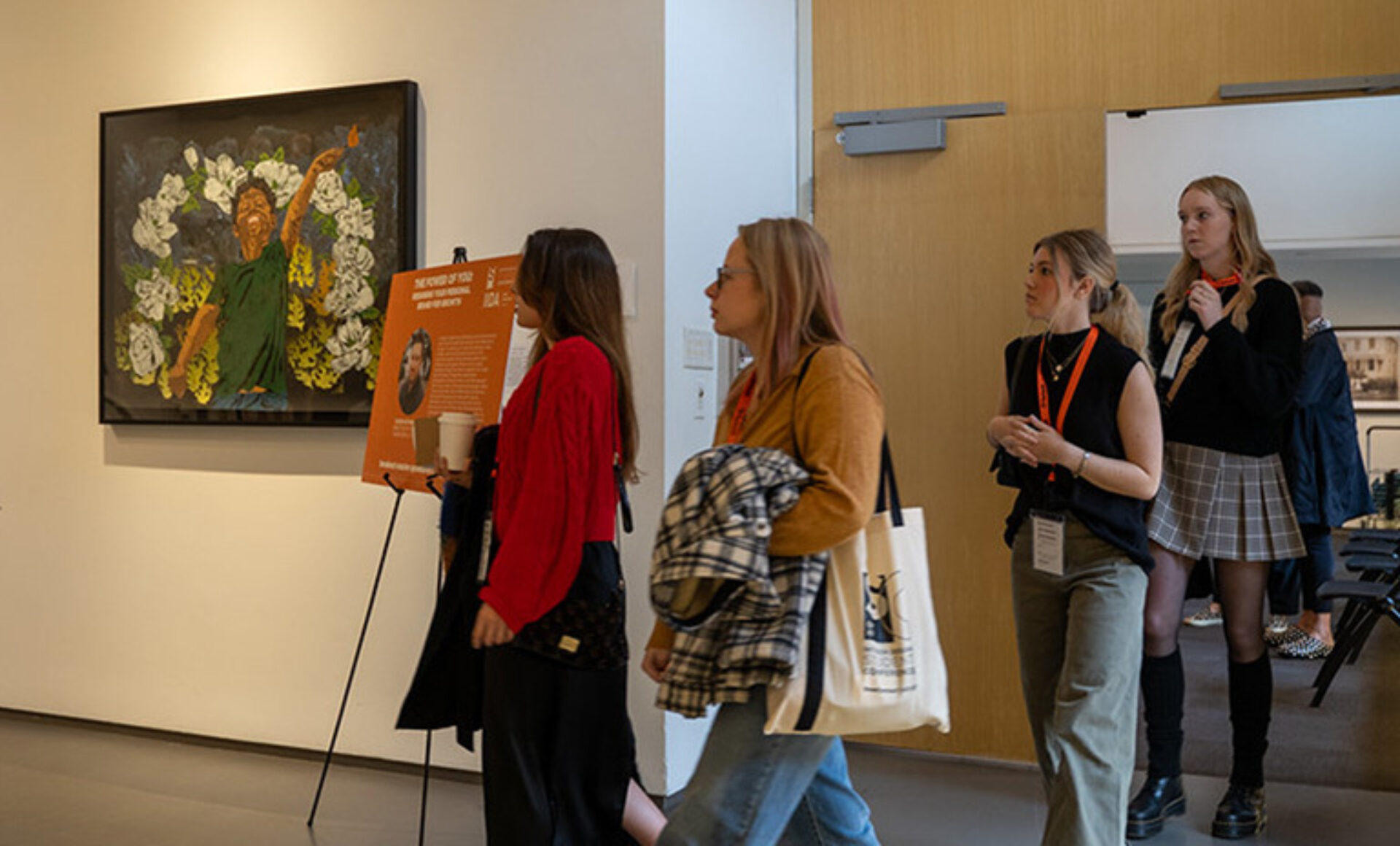(Above Image: 2024 Press Conference at the Platte Institute. Image courtesy of Nebraska Chapter)
Join us in conversation with IIDA Great Plains Chapter (Nebraska) VP of Advocacy, Stacy Spale, IIDA, as she unravels the pivotal moments leading to the enactment of Legislative Bill 16. Signed into law on March 5, 2024, this historic legislation marks a significant milestone for interior designers in Nebraska, offering stamp and seal provisions that promise to reshape the future of design. From the challenges faced to the collaborative efforts that turned the tide, Spale, who recounts her journey from a student recognizing the dire need for regulatory changes in the interior design profession, offers an insider’s look at the advocacy work that made it all possible, and the profound impact this will have on public health, safety, and well-being in built environments.
Tell us a little bit about your history—what got you interested in interior design, IIDA, and ultimately how you became involved in advocacy work?
About 20 years ago when I was an interior design student, I learned that if I wanted to someday replicate the project that I was designing in my studio class in the “real world” independently—I’d actually need a master's in architecture, or I’d need to move to another state that recognized my accredited degree and passage of the NCIDQ credentialing exam…I was paying for my own education, and could not afford a master's, and it was infuriating that that would be required just to practice the exact same stuff I was learning at the time. This was the moment I realized how the lack of interior design regulation would affect my career.
I’m lucky enough to have some diverse work experience at small and large architectural firms, and eventually started teaching classes at the University of Nebraska Lincoln as an adjunct instructor. While I was teaching, I had a former client reach out to me to design a small medical office interior. The scope was interior non-structural renovation but would require a building permit. This was work I was confident I could do independently but again Nebraska’s law only allowed me to work within the exemptions of the Architecture and Engineering Act, prohibiting my ability to practice in business occupancies greater than 3,000-square-feet. The client had to hire an architect to redraw the same design I had created because an architect’s stamp was required to apply for a building permit. This was the moment I realized how the lack of interior design regulation would impact my clients.
This is when I began attending the IIDA and ASID advocacy events and getting involved at the grassroots level. I began my term as the VP of Advocacy for Nebraska in 2022 and set the goal to carry our language across the finish line.
Legislative Bill 16 (LB 16) broadly achieves professional registration and stamp and seal. Is there anything else we should know?
Before the passage of LB 16, it was almost impossible for independent interior designers to work within code-impacted spaces in Nebraska. This legislation recognizes that if we have chosen to obtain a degree, sit for a national exam, and register with the state, we should be allowed to work within our training and testing. LB 16 protects the public while also cutting through layers of red tape, streamlining the process, and reducing costs to the consumer. This not only benefits the public but also hundreds of small businesses and clients across the state.

IIDA Nebraska Chapter

IIDA Nebraska Chapter
Can you take us through the legislative process for introducing and passing a bill like this in Nebraska? What does that look like?
February 2023: A hearing for LB 471 took place, aiming to incorporate the bill into the existing Architecture & Engineering (A&E) Act.
September 2023: Senator Tom Brewer called an Interim Study Hearing—hearings that committees hold during the interim sessions, periods between regular legislative sessions, that can inform what lawmakers will focus on. These hearings are great opportunities for experts, advocates, impacted people, and the public to get legislators’ attention while they’re not quite as busy as they are during the regular session.—
November 2023: Senator Brewer’s office called two stakeholder meetings with all interested parties. It was decided not to pursue joining the A&E Board, and instead to be regulated under the State Treasurer’s office. This was then sent to the Senator’s office, then to people who draft the bill..
January 20, 2024: LB 16 underwent a second reading,and the new language was added as an Amendment titled “The Interior Design Voluntary Registration Act,(AM 2120),” and the amendment passed 34-1.
February 29, 2024: LB 16 and AM 2120 passed the final reading 42-1.
March 5th 2024 – Governor Jim Pillen signed the bill into law, securing stamp and seal privileges for interior designers in the state of Nebraska
Our team consisted of:
Lobbyists Julia Plucker and Sean Kelley—they were instrumental and this quite literally would not have happened without their guidance.
The National Consortium for Interior Design, Marci Merola from IIDA, Matthew Barusch from the Council for Interior Design Qualification (CIDQ), and Lauren Early from The American Society of Interior Designers.
Jessica Dolittle, former VP of Advocacy, Nebraska, from the IIDA Great Plains Chapter
Marilyn Hansen, a 50-year ASID member and current president of ASID Nebraska-Iowa
Kendra Locklear Ordia, IIDA, ASID, Assistant Professor at University of Nebraska-Lincoln
Was there any particular challenge you faced in passing the bill?
One of the most challenging parts was communicating how this policy would protect the public—that it is necessary for our right to work independently—and not just for marketing. Even once we established that the current Nebraska law was restricting my ability to practice independently (for example, we could not work on business occupancy spaces greater than 3,000-square-feet and assembly spaces greater than 1,000-square-feet) and that this was a barrier to my right to have a lawful occupation, many people still held the unconscious bias that we mostly pick finishes. This was difficult to correct and required persistent examples of what I do on a day-to-day basis to protect the public.
Legislatively we knew that without a priority designation, our language would not be heard on the floor of the Unicameral. Broadly speaking, LB 16 is a comprehensive rewrite of Nebraska's Occupational Regulation laws. Luckily LB 16 already had support from both sides of the aisle, and our language was a logical amendment.

IIDA Nebraska Chapter

IIDA Nebraska Chapter
What advice do you have for other advocacy chapters—in terms of participation, collaboration, relationship building, or anything else you see as important?
Every relationship matters. I took the opportunity to talk about our issue with every professional I encountered—my clients, doctors, nurses, cosmetologists, and even my nail tech became an advocate for our profession!
How does it impact the future of design in terms of public health, safety, and well-being in built environments?
Interior designers have always been addressing accessibility, specifying finishes and materials to reduce slip and fall injury, and selecting surface materials to minimize hospital-acquired infections, but LB 16 allows us to work independently. Having a registered design professional designation from the state means we can bid on work that requires a registered professional—most of these jobs require registered professionals because the project impacts the health, safety, and well-being of the public.
Following the successful passage of this bill, what are the next steps or objectives for your advocacy efforts?
I hope to register every eligible interior designer in the state prior to January 1st, 2025. Moving forward we will encourage all our members to sit for the NCIDQ.






